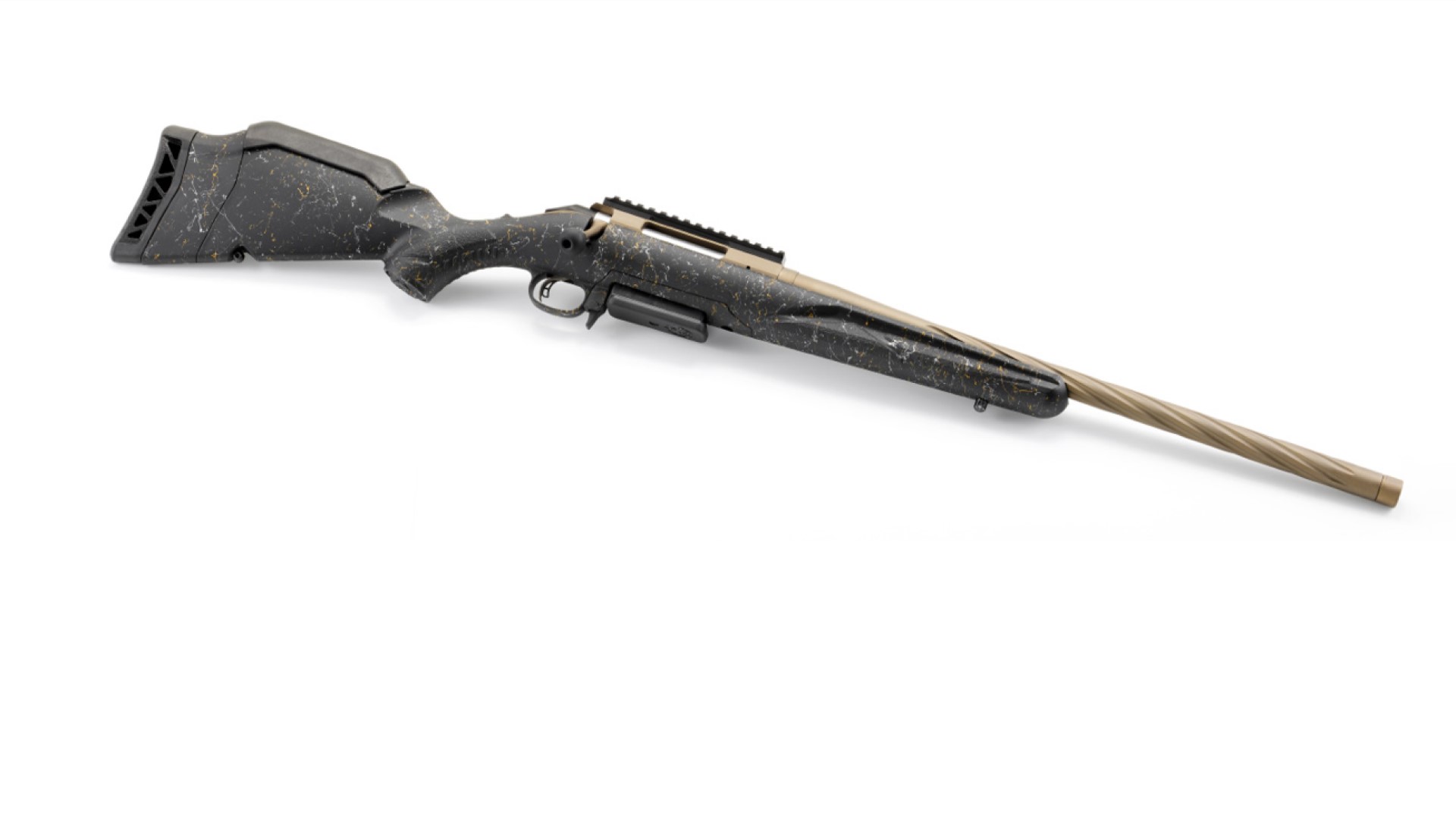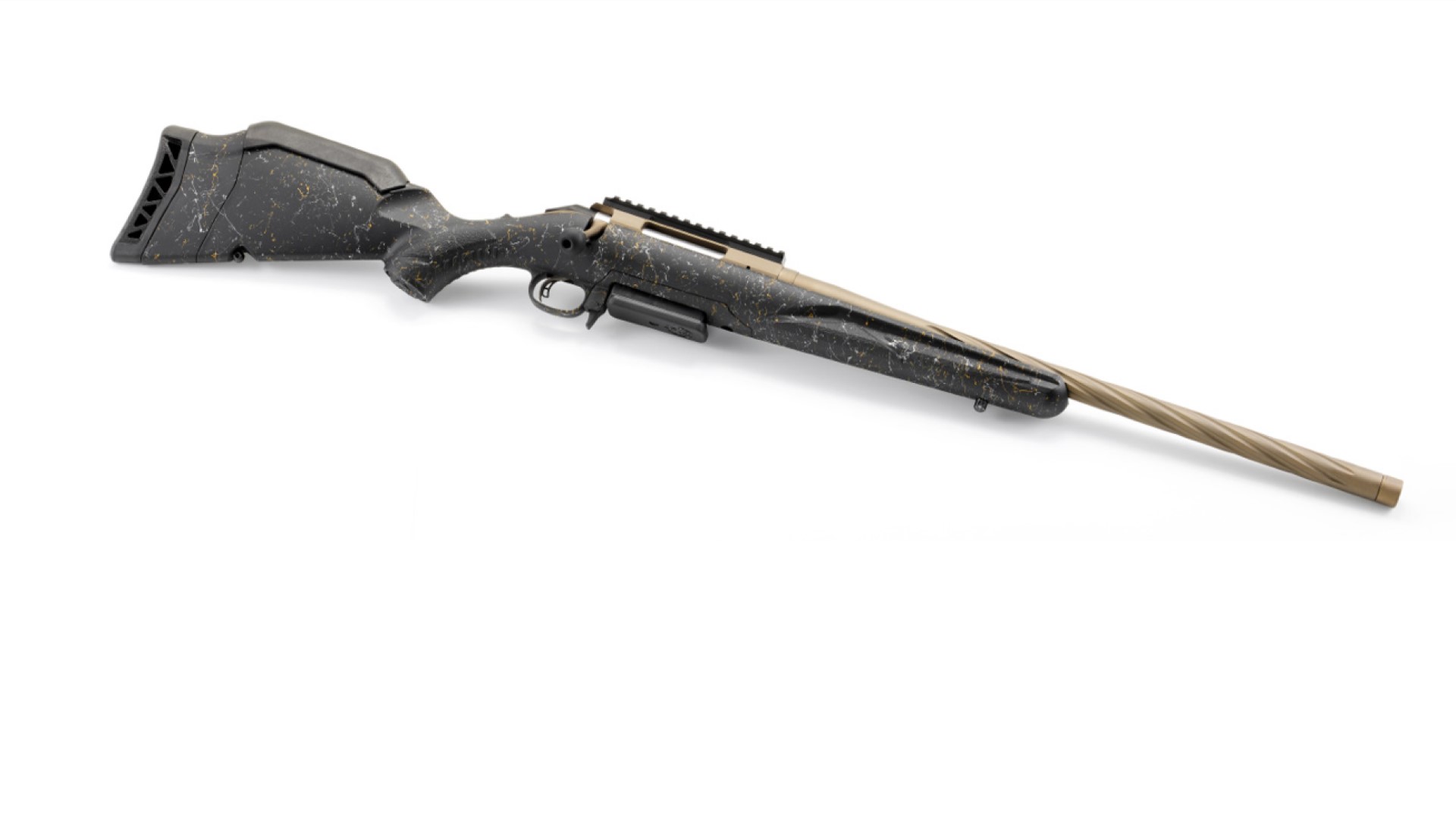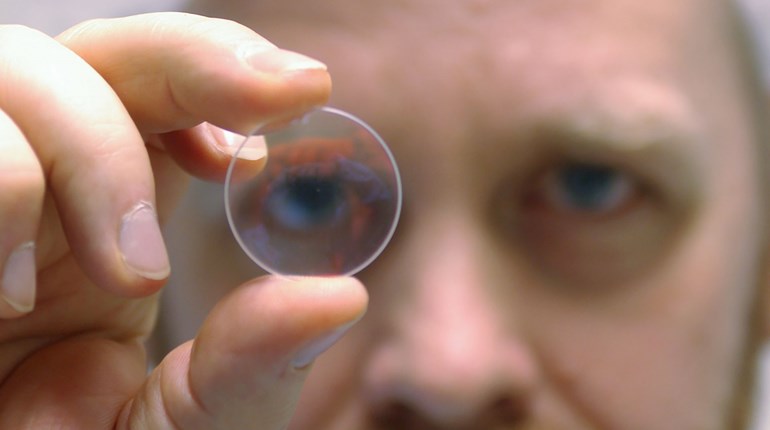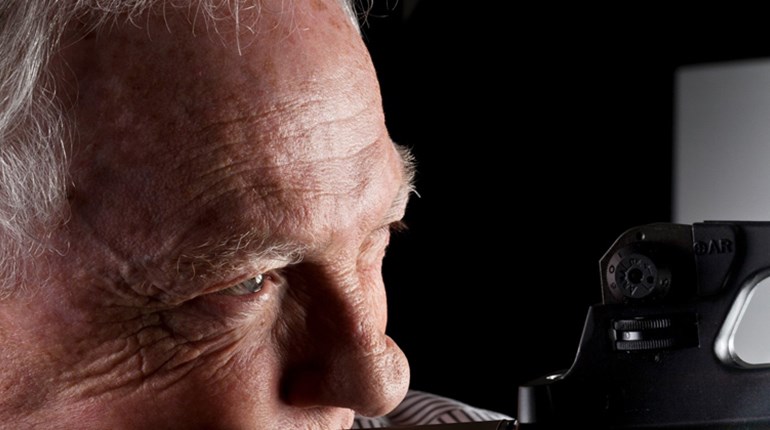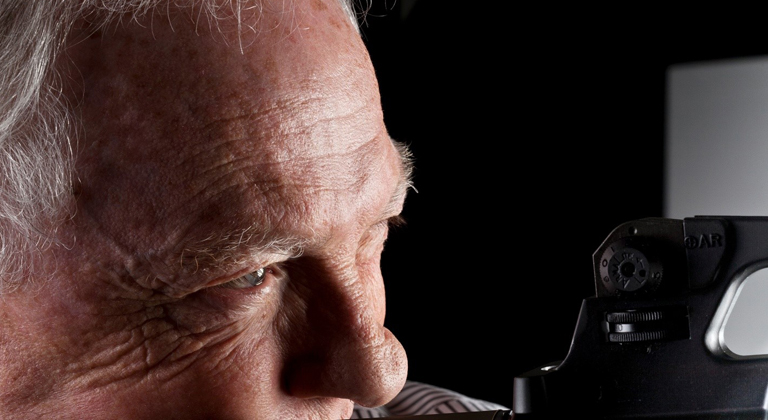
While it is possible to improve a sight picture through technique—a topic for a future article—this review catalogs several products on the market, and highlights what ultimately worked best for me.
One Size Does Not Fit All: My optometrist confirmed that I am slightly nearsighted (20/25) with a minor astigmatism (football-shaped eye rather than round). At age 60, I don’t wear reading glasses and use glasses mostly to drive or watch the evening news from across the room. None of these benched me from the shooting roster, but an important disclaimer is appropriate here: The observations in this article are from the bias of a nearsighted shooter with an astigmatism. They may not be the best solution for you. Start with your eye doctor. 
1. Knoblock Shooting Glasses
Pro: Purpose built. Quick, “no tools” adjustment for each position. Lens perfectly centered in the line-of-sight.
Con: No lens for scoping eye. Doesn’t bring both sight and target into clear focus.
Visit: http://www.knobloch-schiessbrillen.de/allframes.html
My Knoblocks do a much better job of centering the lens than street glasses, and they can adjust from standing to prone. 
2. Bob Jones Sights
Pro: “Reading glass” insert with helpful hood tool. Affordable. Many use them with success.
Con: Somewhat of a compromise for me since I don’t need a correction to see the near front sight post.
Visit http://www.bjonessights.com
BJones Sights was established in 1994 with lenses and fixtures for Match Rifle Sights. Following petitions to NRA and then DCM, lenses were approved for service rifles beginning in 1996. The BJones Sights lenses are designed to be used with the shooter’s eye glasses by offering a balance of a relatively clear front sight and target. BJones lenses are available in 1/8th diopter increments from -6.25 to +5.50 and come in two types for the AR-15. The first generation AR-Kit is made of 5/16-inch aluminum and comes with an assortment of apertures from .042 to .059. Custom sizes are available. The kit also has a long socket tool to RnR the apertures buried inside the carry handle channel. The Type-II BJones hoods are designed to be a direct replacement for your current hood and are threaded for the industry standard 1/4 x 28, 1/4 x 32 and the 7/32 x 40 leafs. 
3. Stallings Machine MicroSight
Pro: They work without compromise.
Con: None. Just recognize that you now have a precision optic in the rear sight hood that may be forgotten during cleaning (don’t ask me how I know.)
Visit http://www.stallingsmachine.com
The Micro Sight hood replaces a standard AR-15 hood as found in most NM AR-15 rear sights. I can enthusiastically attest to the fact that the MicroSight simultaneously brings both front sight post and target into perfect focus. The first version I tested relied on me for proper alignment, something the zone plate technology demands. The second lens was laser-aligned by Wayne Forshee of Stallings Machine, and the improvement was dramatic.
4. AOS Microsights
Visit http://www.sinclairintl.com/optics/sights/sight-accessories/aos-microsight-prod44975.aspx
New optical technology from the Idaho National Laboratory (INL) uses a zone plate design to bend light whereby near and far objects are brought into focus. Similar in appearance to a Fresnel lens found in lighthouses, a zone plate is ground with a set of concentric rings that alternate between transparent and opaque. The transparent sections let some light waves pass through unchanged, focusing objects that are far away (basically, at infinity). Light passing through the edges of the opaque rings gets diffracted, which brings nearby objects into focus. The seemingly impossible result: Sharp images of distant and near objects, simultaneously.
From David Crandall of INL, a member of the U.S. National Long-Range Rifle team and developerr of the zone plate concept: “The MicroSight gives you much of the performance you’d get out of a holographic (red dot) or telescopic sight, but it’s more reliable, much lighter weight and less expensive.” Whereas lenses focus light using refraction—essentially changing the direction of light waves by changing their speed, zone plates use diffraction. Diffraction describes how waves bend, break up, spread out and interfere with each other as they encounter obstacles. The diffraction of sound waves, for example, explains how you can hear someone’s voice from around a corner.
A high power champion in his own right, Stallings Machine Owner Wayne Forshee has helped transform the theory into practical application. Forshee has combined his own shooting expertise and machine engineering business with the zone plate lens for a workable and affordable solution. In short, the MicroSight works—without compromise.
Order your MicroSight today and fall in love with your iron sight gun all over again.
5. SuperFocus Glasses
Pro: Convenient “many glasses in one” design. Big improvement over street glasses.
Con: Expensive. Small lens sometimes difficult to keep in line-of-sight. Doesn’t bring both sight and target into clear focus. Company seems to be out of business.
Action Shooter legend Rob Leatham uses four sets of glasses at the Bianchi Cup—one for each firing line. When I approached him for an opinion on my SuperFocus glasses, I noticed that his shooting glass lenses were larger than mine. What I like about the SuperFocus glasses is that I can adjust them to any distance as if I had several pair of glasses. The round lens is an improvement over my street glasses as far as having enough lens to keep them in my line-of-sight in the prone position. However, larger shooting glasses like Leatham’s or the Decots worn by world champion Nancy Gallagher offer an even larger field of view. As of this writing, the company seems to be out of business, but it appears they may still be purchased secondhand on auction sites.











